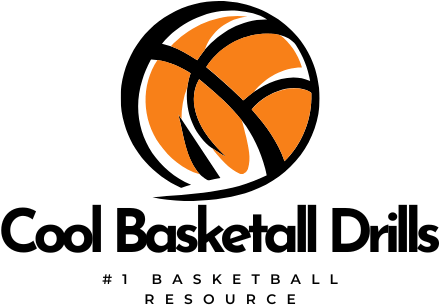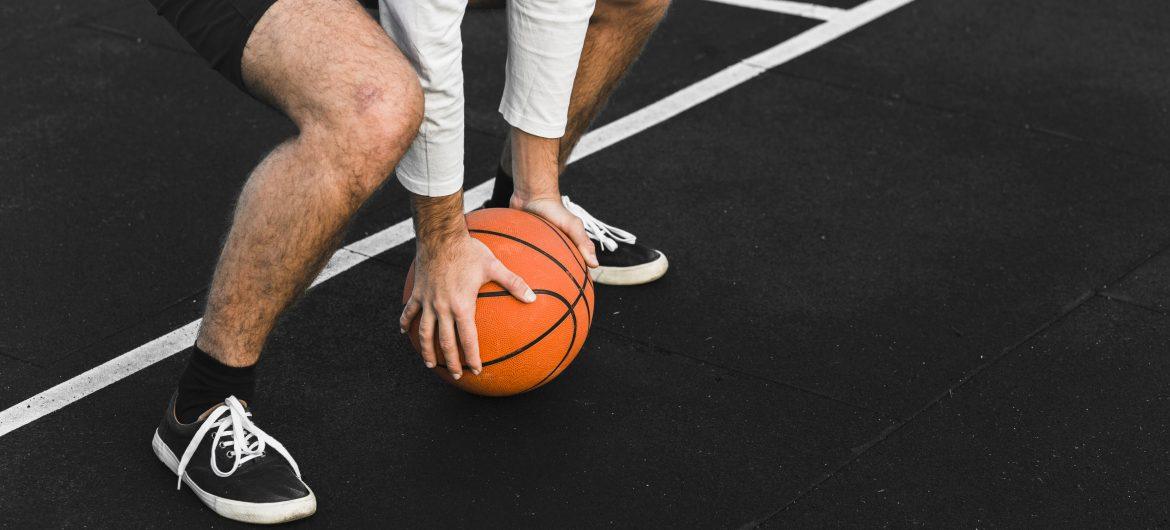Introduction
Looking to improve your close-range scoring and footwork? The Mikan drill is a time-tested basketball exercise that helps players develop finishing skills, balance, and coordination. Named after Hall of Fame center George Mikan, this drill has been a staple in basketball training routines for decades. In this guide, you’ll discover how to execute it properly, why it’s so effective, and how to integrate it into a complete training regimen.
What is the Mikan Drill?
This classic under-the-basket drill focuses on alternating layups using both hands. It’s designed to teach proper footwork, touch around the rim, and balance. While it originated with post players, athletes at all positions benefit from it.
Origins of the Mikan Drill
George Mikan, one of the NBA’s early superstars, used this drill to develop dominance in the paint. His emphasis on fundamentals, footwork, and finishing made him a revolutionary figure in basketball. The drill bearing his name continues to be a foundational tool for basketball development.
Key Benefits
- Ambidextrous Finishing: Builds confidence on both sides of the hoop, helping players score in various situations.
- Consistent Footwork: Helps players internalize movement patterns near the rim.
- Natural Rhythm: Establishes a smooth sequence between steps and shots.
- Enhanced Touch: Improves feel and control when finishing close to the basket.
- Strength and Conditioning: Frequent jumping develops lower body strength and explosiveness.
- Mental Sharpness: Repetition builds focus and automatic responses under pressure.
How to Perform the Drill Correctly
- Start under the hoop with the ball in your right hand.
- Step with your left foot and shoot a right-hand layup.
- Catch the ball as it comes through the net.
- Repeat this cycle for a set time or number of reps.
Training Suggestions
- Beginner: 3 rounds of 30 seconds
- Intermediate: 3 rounds of 45 seconds
- Advanced: 4 rounds of 1 minute
Key Reminders
- Maintain a steady pace.
- Avoid unnecessary dribbles.
- Keep your body square and controlled.
Tips for Better Technique
- Keep your hands up at all times to shorten your release time.
- Use the square on the backboard for visual alignment.
- Focus on your foot placement to build strong fundamentals.
- Work on your non-dominant hand even if it feels awkward—it will pay off.
Common Mistakes to Avoid
- Bringing the ball down: Keep the ball high to prevent steals.
- Sloppy footwork: Each step should be deliberate.
- Poor balance: Stay grounded between movements.
- Inconsistent tempo: Keep your rhythm even across both sides.
Creative Variations to Add Challenge
- Reverse Finishes: Execute reverse layups to develop reverse finishing.
- Weighted Ball: Use a 3–5 lb basketball to enhance upper-body strength.
- Two-Ball Drill: Use two basketballs to build coordination and control.
- Jump Stop Variant: Add a jump stop before each shot to simulate real-game movement.
- Simulated Defender: Partner up and have someone lightly contest each shot.
- Off-the-Glass Catch: Let the ball bounce once before shooting again—builds timing.
Integrating It Into Full Workouts
Use the drill as a warm-up or finisher to reinforce fundamentals. It pairs well with other shooting and footwork drills.
Sample Workout Segment
- Mikan series: 4 rounds (mix regular and reverse)
- Spot shooting: 15 makes per spot
- Defensive slides: 2 sets of 20 seconds
- Reverse Mikan drill: 3 rounds
- Sprint conditioning: 3 sets of full-court sprints

Who Should Do This Drill?
Everyone from youth players to professionals can benefit. Guards can improve finishing, while bigs strengthen post moves. Coaches at every level—from youth to the NBA—incorporate it to teach fundamentals of inside scoring.
NBA and College Players Who Use It
Players like Tim Duncan, Anthony Davis, and Pau Gasol have long emphasized this drill to maintain elite finishing ability.
Tracking Progress
- Layup Count per Minute: Monitor how many makes you can complete within a time frame.
- Weak-Hand Improvement: Track accuracy using your off-hand.
- Jump Height or Explosion: Note your finishing elevation.
- Real-Game Outcomes: Does your finishing improve in competitive settings?
Use tools like stat-tracking apps or a simple notebook to monitor changes week by week.
Tips for Coaches
- Teach the drill slowly at first.
- Emphasize footwork and form over speed.
- Create competitive games using this drill to keep players engaged.
- Record sessions for form review.
Suggested Coach Variations
- Timed competitions: See who can make the most in 30 seconds.
- Partner rebound drills: Add a second player to rebound and challenge rhythm.
Advice for Parents and Young Players
The Mikan drill is simple enough to be done at home or on a local court. It’s ideal for driveway practice and doesn’t require special equipment. Focus on technique and consistency.
Fun Game Variation for Kids
Challenge them to make as many alternating layups as possible in 30 seconds. Set personal records and try to beat them each week.
Using the Drill Year-Round
In-season or off-season, this drill is great for building core basketball skills. It’s effective during warm-ups, skill development sessions, and individual training. It’s short but powerful.
Supplementary Drills That Pair Well
- Chair Finishing Drill
- Cone Layup Drill
- Block-to-Block Layups
- High-Rep Free Throws
- Contact Finishing with a Pad
The Biomechanics Behind the Mikan Drill
Understanding the body mechanics involved in the drill helps players maximize benefits. The drill emphasizes proper foot placement, balance, and hand-eye coordination. Each step mimics in-game movements, helping the brain develop muscle memory.
Alternating layups require strong core stability and ankle strength to maintain balance while moving side to side. This dynamic movement pattern promotes neuromuscular efficiency, allowing players to become more automatic and fluid in their finishing.

All images used are from Freepik.
How the Mikan Drill Develops Basketball IQ
Beyond physical skill, the drill sharpens mental aspects of scoring. Players learn to time their shots perfectly as they catch the ball “in rhythm” after each basket. This rhythm training helps with timing layups off passes or rebounds during games.
It also trains players to be comfortable finishing under defensive pressure, forcing quick decision-making and adaptability. Coaches note players who consistently practice the drill show increased confidence in the paint and better situational awareness.
Historical Impact and Legacy of George Mikan
George Mikan’s legacy goes far beyond this drill. As one of basketball’s pioneers, he transformed how the center position was played. Before Mikan, there was less emphasis on footwork and finesse for big men. His combination of size and skill fundamentally changed post play.
The Mikan drill captures his philosophy—focus on fundamentals, repetition, and versatility. His influence is still felt today with the drill taught at every level.
Training Science: Why Repetition Matters
Repetition builds neural pathways. The more a player repeats the Mikan drill, the stronger the brain-muscle connection becomes. This is why elite players practice it consistently, even on off days.
Deliberate practice rewires the brain for muscle memory, making finishing instinctive. A study in the Journal of Sports Science & Medicine highlights drills like the Mikan increase motor skill retention compared to random practice.
Stories From Pro Players Using the Mikan Drill
Many NBA stars credit the Mikan drill for their inside scoring skills. Tim Duncan, known for fundamentals, reportedly drilled Mikan routines regularly. Anthony Davis has praised it for developing ambidextrous finishing under pressure.
These stories prove the drill isn’t just for beginners—it’s a lifelong training tool.
Advanced Variations to Continue Challenging Yourself
Two-Step Mikan Drill: Perform two finishes on the same side before switching hands.
Transition Mikan: Add a short sprint before starting to simulate fast-break finishing.
Contact Finishing: Have a partner lightly contest your shot or body you.
Coaching Tips: How to Teach the Mikan Drill Effectively
- Coaches should focus on form over speed initially. Break the drill into parts:
- Footwork without the ball.
- Catch-and-shoot alternating layups.
- Gradually increase pace while maintaining control.
- Use video feedback and friendly competition to keep players engaged.
Complementary Drills to Enhance the Mikan Drill
- Zig-Zag Dribbling
- Spin Moves
- Close-Range Shooting
- Plyometric Jumps
Common Misconceptions About the Mikan Drill
Some think it’s outdated or only for big men. In reality, it’s beneficial for all positions. Guards improve finishing; big men refine post moves.
Others believe speed trumps technique. Precision and control in the Mikan drill directly improve game finishing under pressure.
Using the Mikan Drill in Your Weekly Routine
Practice 2-3 times a week as part of shooting or footwork workouts. Consistency beats occasional long sessions. Balance with conditioning and other skills.
Nutrition and Recovery to Support Skill Development
Proper hydration and a balanced diet fuel your workouts. Include protein, healthy fats, and carbs. Post-training stretching reduces injury risk and aids mobility.
The Psychological Benefits of the Mikan Drill
Repetition builds confidence and reduces game-day anxiety. The drill’s rhythmic nature promotes focus and “muscle memory calm” for clutch performance.
How to Measure Success Beyond the Drill
Track your makes per minute, weak-hand accuracy, jump height, and game performance. Video tape can help spot improvements in footwork and shot selection.
Explore More Training Resources:
CoolBasketballDrills.com — Practical basketball drills
Breakthrough Basketball — Trusted coaching insights
USA Basketball Youth Development — Skill-building content for all levels


